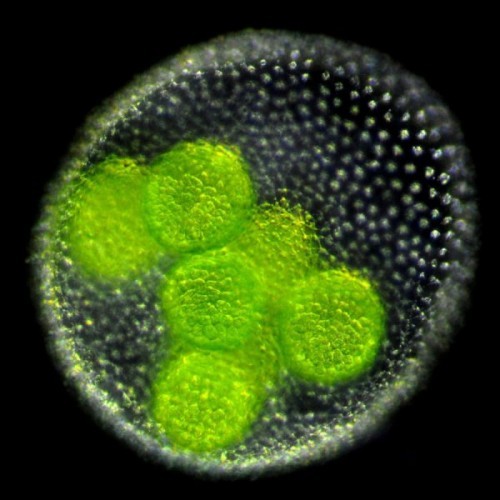Researchers Reveal the First-ever 3D Image Turns Itself Inside-Out
| Marco Foronda | | Apr 29, 2015 09:29 AM EDT |
(Photo : Stephanie Hohn/Aurelia Honerkamp-Smith/Raymond E. Goldstein) Researchers have captured the first 3-D video of a living algal embryo turning itself inside out and back again.
University of Cambridge scientists, with the use of a fluorescence microscopy, observed the first-ever 3D images of an embryo that conducts the vital process of gastrulation that seems to involve in developing organism that turns itself inside-out.
Published in the Physical Review Letters journal, British researchers described the outcome of their observation and explained that they were able to make use and test a mathematical model of morphogenes. It is the process on which the embryo goes through to define and figure out the possible shape of the organism.
Like Us on Facebook
It is believed that gastrulation happened during morphogenesis as it marked when an embryo turns inside-out from being a sphere up to becoming a mushroom shape and back to its original shape. The observation does show that the embryo does fold inward and it does forms the primary germ layers that that intensify body’s organ.
The team who study the embryos opted to use green algae, which is popularly known as Volvox, as it is ideal to their study since they accomplish their transformation just by shifting cell shapes and the connections between cells are relatively simple compared to an animal embryo gastrulation. Scientists are having a hard time in observing animal gastrulation as they are highly complex and difficult to understand.
“Until now there was no quantitative mechanical understanding of whether those changes were sufficient to account for the observed embryo shapes, and existing studies by conventional microscopy were limited to two-dimensional sections and analyses of chemically fixed embryos, rendering comparisons with theory on the dynamics difficult,” said author of the study, Raymond E. Goldstein.
In the future, the study team are hoping that they can be able to apply the outcome of their research that involves human embryos.
Co-author of the study Stephanie Hohn, cellular biologist is excited as they were able to visualize the intriguing process in a 3D version.
TagsResearchers Reveal the First-ever 3D Image Turns Itself Inside-Out, embryo, 3D image, Volvox, morphogenesis, first-ever 3D images of an embryo
©2015 Chinatopix All rights reserved. Do not reproduce without permission
EDITOR'S PICKS
-

Did the Trump administration just announce plans for a trade war with ‘hostile’ China and Russia?
-

US Senate passes Taiwan travel bill slammed by China
-

As Yan Sihong’s family grieves, here are other Chinese students who went missing abroad. Some have never been found
-

Beijing blasts Western critics who ‘smear China’ with the term sharp power
-

China Envoy Seeks to Defuse Tensions With U.S. as a Trade War Brews
-

Singapore's Deputy PM Provides Bitcoin Vote of Confidence Amid China's Blanket Bans
-

China warns investors over risks in overseas virtual currency trading
-

Chinese government most trustworthy: survey
-

Kashima Antlers On Course For Back-To-Back Titles
MOST POPULAR
LATEST NEWS
Zhou Yongkang: China's Former Security Chief Sentenced to Life in Prison

China's former Chief of the Ministry of Public Security, Zhou Yongkang, has been given a life sentence after he was found guilty of abusing his office, bribery and deliberately ... Full Article
TRENDING STORY

China Pork Prices Expected to Stabilize As The Supplies Recover

Elephone P9000 Smartphone is now on Sale on Amazon India

There's a Big Chance Cliffhangers Won't Still Be Resolved When Grey's Anatomy Season 13 Returns

Supreme Court Ruled on Samsung vs Apple Dispute for Patent Infringement

Microsoft Surface Pro 5 Rumors and Release Date: What is the Latest?










